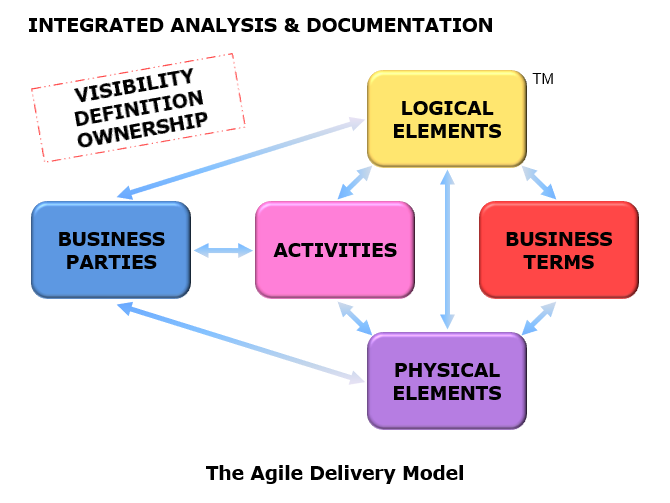Project Management – Agile
The structured documentation in the Change Management Model constitutes a methodology – i.e. a set of structured methods – which significantly improves the rigour of business systems delivery. It is, therefore, an invaluable addition to project management approaches, especially Agile.
In recent years Agile has become the standard approach for managing all but the very smallest projects. In a typical Agile project, the primary focus is on the daily ‘Scrum’ - which promotes greater interaction within project teams. However, whilst this undoubtedly improves communication and co-ordination between team members, it does not ensure that specific delivery issues will be dealt with satisfactorily.
A lack of structured methods for analysis & documentation means that Agile - Scrum on its own is extremely weak in terms of understanding the problem. Without clear methods which require the problem to be defined, and the solution specified, to a genuinely practical and meaningful level of detail, ‘being Agile’ to this extent is highly unlikely to produce a specification against which the quality of the delivery can be assured. So project teams can easily overlook data quality issues which impact not only the value of solutions and how easy they are to support, but also the ability to deliver them in the first place. In short, Agile - Scrum is arguably a lot more about managing communication than managing delivery.
The Change Management Model represents the crucial delivery component that Agile - Scrum lacks, because its use requires that the proposed solution is documented to a level of detail which can assure the quality of the delivery, and allows the change that it constitutes to be successfully managed. Further, the model supports top-down, issue-driven analysis, where the scope of that analysis becomes apparent when enough has been done to resolve an issue, rather than having to be decided up front. This complements Agile’s concept of analysing only the aspects of business activities & systems which are directly relevant to a project.
Therefore, in the context of an Agile project the Change Management Model could just as well be referred to as the Agile Delivery Model…

As important as the need to manage the delivery of any single project is the need to co-ordinate the delivery of several projects within the same enterprise. When any project is managed ‘in isolation’ (i.e. without cross-project co-ordination) its solution can be at odds with those of other projects serving similar functions; such that its data, although perfectly satisfactory for its primary purpose, becomes disparate to other sources.
And because data quality is fundamentally a subjective concept, such disparities are likely to go un-noticed until efforts are made to integrate data for the purposes of core initiatives like Business Intelligence, Customer Relationship Management, and Data Governance. Also, managing projects ‘in isolation’ amounts to a waste of analytical effort, because the findings from previous analyses tend to be ignored rather than re-used where appropriate.
Deploying the Change Management Model across all projects optimises the re-use of findings from previous analyses and facilitates cross-project co-ordination & collaboration through…
(1) The integration of structured documentation across all business activities by way of logical and physical references which are both unique and persistent across the whole enterprise, and…
(2) The ability to translate subjective terms - e.g. entity & attribute names, activity descriptions - from one business area to another.
So supplementing the Agile approach with use of the Change Management Model, or Agile Delivery Model, extends the scope of ‘being Agile’ from single projects to the whole enterprise, and thereby lends new meaning to the concept of the ‘Agile Organisation’.
